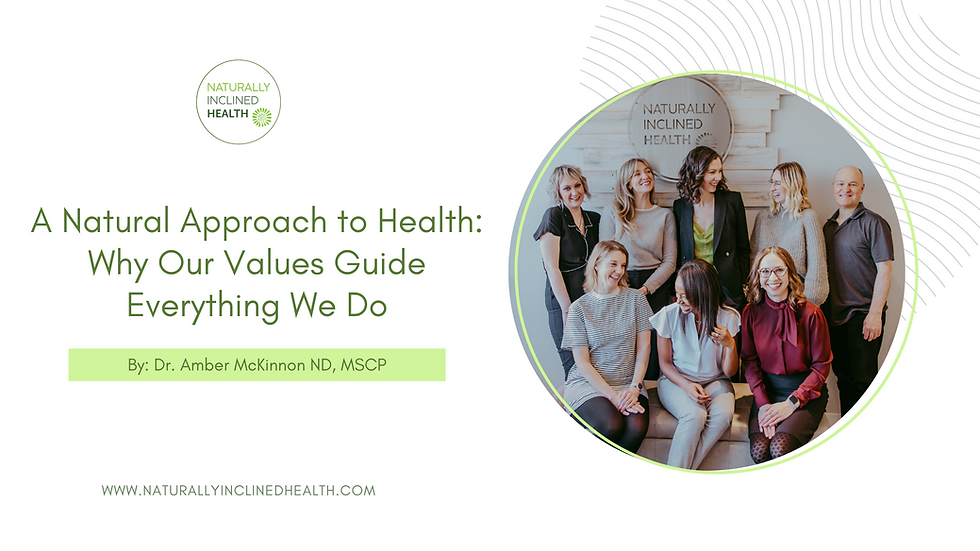Fun in the Sun: Sunscreen 101
- Dr. Jayelle Haavaldsen, ND

- Jun 28, 2021
- 3 min read
Updated: Mar 1

It is sunscreen season! (I hope this excites you as much as me - I’m a real “summer person” ). There are a lot of options out there and a lot of information about sunscreen out there. We decided to write up a quick blog post that summarizes the difference between the sunscreens out there and what actually matters when it comes to your health.
SUNSCREEN 101
What does the stuff on a sunscreen label mean? UVA and UVB refer to the different types of ultraviolet rays that sunscreens might protect against.
UVA - These are the most abundant UV rays that reach the earth and are mostly associated with skin aging (wrinkles, dark spots, loss of elasticity). These rays penetrate deeper into the skin than UVB. UVA rays are present every day (even if it isn’t sunny!) and can pass through glass and clouds.
UVB - These are the rays that are associated with causing tans and sunburns and play a stronger role in the formation of skin cancers.
SPF - This stands for sun protection factor and it refers to the level of protection from UVB rays. The number represents how long it will protect your skin compared to using no sunscreen. In other words, if you are wearing SPF 30 it should take your skin 30x longer to burn than it would without any sunscreen. Higher SPFs also filter out a bit more of the rays that cause damage.
Ultimately you want a broad-spectrum sunscreen that protects you from both UVA and UVB.
Sunscreen Types and Ingredients
Generally speaking, sunscreens have been categorized into “chemical” and “barrier” sunscreens, depending on how they work to mitigate the damage of UV rays.
Chemical sunscreens: These sunscreens use ingredients such as oxybenzone, avobenzone, and actinoxate. These ingredients work by absorbing the light energy and transforming it into heat, which essentially deactivates it. Unfortunately, there are a couple of concerns around these ingredients: some of them are known or suspected hormone disruptors (meaning, they impair our body’s proper hormone function) or carcinogens (meaning, contribute to cancer growth). A recent study found that many chemical sunscreens were also contaminated with benzene, a known carcinogen. There are also concerns that chemical sunscreens are damaging the oceans, water systems, and coral.
Barrier/physical sunscreens: These usually use zinc oxide or titanium dioxide (hence the term “mineral-based sunscreens) as the main filter ingredients. They work by actually blocking the rays so they aren’t absorbed. Both zinc and titanium oxide protect from UVA and UVB rays (zinc oxide is slightly more protective) and are thought to be safe for us and the oceans. The disadvantage of these sunscreens is that sometimes they leave a faint white tint to the skin - I find this problem is less common as sunscreen formulations have improved.
Also remember, there are many ingredients in sunscreen beyond just the active ingredients. Avoiding ingredients like phthalates, and parabens is also recommended.
Ultimately, the sunscreen you choose is up to you! If you’re concerned about health and the environment, zinc oxide-based sunscreen might be your best bet.
Have questions? Reach out!
*Disclaimer: The information contained within this post is for general educational and information purposes only, no doctor-patient relationship is formed. It is not professional medical advice, diagnosis, treatment, or care nor is it intended to be a substitute therefore. If you have any concerns or questions about your health, always seek the advice of a qualified healthcare professional.




Comments